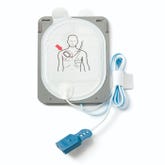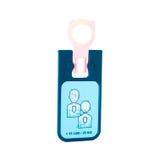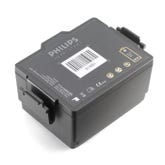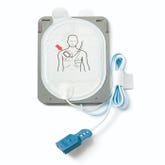Why is My AED Beeping?
- Apr 13, 2020

5 Reasons why your beeping AED is chirping (and what to do about it)!
So you’ve made the wise, wonderful, and potentially life-saving decision to equip your office, home, school, factory, or organization with a highly visible and strategically placed automatic external defibrillator (AED); you’ve thought about the Reasons Why AED Compliance Management is Important; and you’ve invested in an AED compliance management program. Maybe you’ve even taken the plunge and have your First Aid, CPR, and AED certifications in your back pocket — good for you!
But now your AED is beeping! Why?!
Don’t worry, it’s actually a good thing. Most AEDs run daily self-tests to ensure that, in the event of an emergency, they are ready to save lives. The beeping is just a gentle reminder to make sure your investment in safety is ready to work when you really need it.
Here are the 5 most common reasons your AED is beeping:
-
AED Pads have expired
-
Pads have been disconnected from the AED
-
AED battery has expired
-
AEDs software needs to be updated
-
A mechanical error has been detected
While some of the causes of these error messages are pretty easy to identify and fix, if your AED is beeping, the odds are pretty good that you’re going to wish you had an AED Preventative Maintenance and Service Plan.
AED Pads Have Expired
You may not realize it, but the pads that come with your AED have a finite shelf life. The pads are what deliver the shock to an individual experiencing a Sudden Cardiac Arrest (SCA). So it’s critically important that they’re in tip-top shape. Of course, pads should be replaced after use, but they also have an expiration date.
Why do AED pads expire? To make sure that the pads stick to the skin effectively, each pad is coated with an adhering and conductive gel. Over time, the liquid in the gel may dry out and can prevent the pads from sticking effectively. For example, if the pads pull away from the skin during CPR, the AED may not be able to provide an effective analysis of the heart rhythm to deliver shocks as needed.
AED Pads Have Been Unplugged
Your AED pads should always be kept plugged into the device so they’re ready for use in an emergency. Occasionally, however, pads may be inadvertently disconnected — perhaps you recently decided to move your AED cabinet to a more visible location or the annual hallway repainting was a little more vigorous than usual. In this case, simply reconnect the pads to the device and you’re good to go.
AED Battery is Expired
Even if you’ve been fortunate enough to have left your AED untouched since its installation, its battery life is still limited. When your AED indicates that it’s time to replace the battery, don’t delay. It’s time to order a replacement battery immediately.
AED Software Update Needed
Most manufacturers work diligently to improve existing technology and to develop new technology to ensure optimal performance. The better the technology, the more effective your device will be at saving lives.
The easiest way to install a software update is to contact CardioPartners’ Service and Repair Department.
A Mechanical Error Has Been Detected
Much like Goldilocks, your AED needs to be stored in an environment that’s just right. Take a look at your AED User Manual and make sure that you’re storing your AED in a location with an acceptable temperature range. While your AED is capable of operating during a rescue at extremely hot or cold temperatures, your device should always be stored in a climate-controlled environment.
If your AED is located in a company vehicle, daily travel over rough roads may be enough to jostle pad connections free or set off a mechanical error.
Now’s the time to make sure your AED is ready when you need it. If it’s beeping, odds are you’ll need to do something about it immediately. If the fix is outside of your comfort zone, call a certified AED technician immediately.
While we’re on the subject of AED maintenance, preventative maintenance plans are a painless and affordable way to ensure that your devices are in perfect, shock-ready working order. A preventative maintenance and service plan makes it easy for you to address repairs deemed necessary during routine compliance checks, can minimize potential liability issues, and even helps keep your costs down should repairs be necessary.
To learn more about our AED and defibrillator service and preventative maintenance programs or LifeShield, our online compliance management program, contact Cardio Partners at 866-349-4363 or email us at customerservice@cardiopartners.com.









 CALL US:
CALL US: